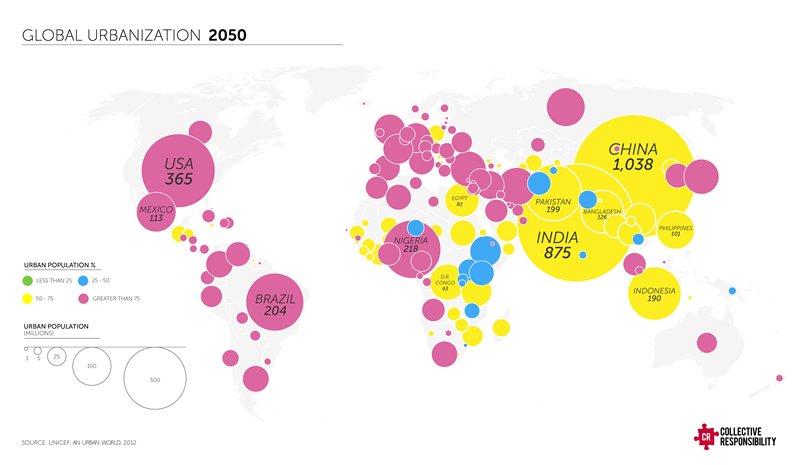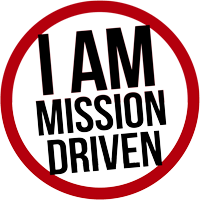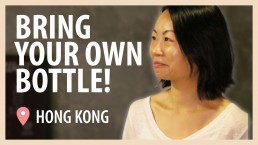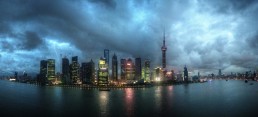Shifting Consumers Off Plastic - Ada Yip, Urban Spring | Entrepreneur For Good
As the world may be finally waking up to the challenge that plastic is presenting out environment, and for many, the plastic beverage bottle is one of the products that is front and center.
In Hong Kong though, the people at Urban Spring think they have a solution that will help reduce the number of plastic bottles that the city is sending to landfill. Something that over the last two months has grown more urgent as China has closed its borders to waste imports.
To learn more about their mission, and how they are attacking the challenge of getting consumers to act more responsibly, I spoke with their CEO Ada Yip to learn more.
This interview is about solving one of the biggest problems we face through sustainable consumer change.
About the Entrepreneurs For Good Series
Through this series, we speak with Asia based entrepreneurs whose mission it is to bring solutions to the environmental, social, and economic challenges that are faced within the region to learn more about their vision, the opportunities they see, and challenges that they have had to overcome.
It is a series that we hope will not only engage and inspire you, but catalyze you and your organizations into action. To identify a challenge that is tangible, and build a business model (profit or non) that brings a solution to the market.
About Ada
Ada is the Executive Director at Urban Spring, a purpose-driven start-up with a mission to reduce the consumption of single-use plastic in Hong Kong through the provision of safe and modern water drinking experience.
Ada is also a co-founder of 43 Ventures which invests financial and human capital in innovative social start-ups.
Follow Ada and Urban Spring
Website: http://www.urbanspring.hk/
Facebook: https://www.facebook.com/ada.yip.18
LinkedIn: https://www.linkedin.com/in/ada-yip-hongkong
About Rich
Driven by the belief that change begins with a single step, Richard Brubaker has spent the last 15 years in Asia working to engage, inspire, and equip those around him to take their first step. Acting as a catalyst to driving sustainability, Brubaker works with government, corporate, academic and non-profit stakeholders to bring together knowledge, teams, and tools that develop and execute their business case for sustainability.
Follow Rich
Website: http://www.richbrubaker.com
Facebook: https://www.facebook.com/rich.brubaker
LinkedIn: https://www.linkedin.com/in/richbrubaker
Snapchat: http://snapchat.com/add/richbrubaker
Instagram: https://instagram.com/richbrubaker
Twitter: http://www.twitter.com/richbrubaker
Contact Rich
[email protected]
Full Interview Transcript
RICH: Welcome back everyone. Thank you for joining. We are here with Ada Yip who is with Urban Spring and we are standing in front of their Well product, which is just going out to the market. We're here to talk to day about social entrepreneurship, building a project that changes mindsets and really just maintaining a positive attitude as your building your enterprise going forward. So we hope you enjoy this episode, if you do please like, share and comment.
BACKGROUND
RICH: So do me a favor and give us an introduction about yourself and about Well.
ADA YIP: So I'm born and brought up in Hong Kong. So home grown sort of Asian girl and you know I've been in actually in a corporate world for more than 15 years. The four years ago I decided that I want to explore social entrepreneurship and got to network with a lot of people you know, meet the fonder of Urban Strain, which Well is our first product. That's how I got into you know starting to work with the company two years ago and develop the product. Well is basically a new design water station, which we hope that people would refill. You know, really develop, redevelop that trust with drinking water outside home and offices. So the mission really is to reduce consumption of single use plastic bottles. We want to provide that alternative.
RICH: So you're trying to basically get rid of the plastic bottle at the end of the day.
ADA YIP: I hope so.
THE PLASTIC PROBLEM
RICH: Why is that a problem? I think we've all seen on the news, in the oceans, but is there a particular problem with plastic and single use plastic in Hong Kong itself?
ADA YIP: Every single day we've got 5 million tons of plastic waste just a day in Hong Kong. Majority of those are actually plastic bottles. The majority of the plastic bottle is actually water bottles so that's why were' coming from so it's really a huge problem and we're just talking about Hong Kong. As far as I know, all the major cities in the world each year is a double digit increase in bottle sales.
RICH: Now I kind of think like when it comes to these issues, we've had NGOs for years tell us that we should reduce, reuse, recycle that we should bring our own bottles, things like that. It hasn't worked. I mean, honestly, we're still using more and more plastic every day. How is your approach different? I mean you're using your building product, you're bringing a business solution, how is this different than just pure advocating? How do you think this might change the market?
ADA YIP: I think you know Richard, you hit the point. I mean, we are providing a product i.e. an alternative. So I think that nonprofit world actually has done a fantastic job basically educating and bringing that awareness in the past you know decade actually. But bringing you the bulk bottle, it helps, but then if I'm really thirsty in the middle of Causeway Bay or Central, I cannot find water I cannot refill. I'm really thirsty. I have to go into convenience store and supermarket and buy.
Today I am offering an alternative, i.e. if you bring your own bottle, or if you buy your first disposable of the day, you can actually go and refill as opposed to buy another one. You know, if no more like in a really hot day, people buy 2 or 3 but ends up only buy one for laze people that don't bring their own bottles, we're already saving a lot. So I think having that alternative giving people that choice is important. So I think we worked, I see it as a collaboration with the charities basically did they very good with advocating working with the government on communication and education and we focus on the product and work with them on that communication and awareness and all that.
More importantly I think what we try to do its really bring the product. i.e not everyone is environmentally friendly, but every one wants to look cool. Everyone has got an attitude how they want to live a sustainable life and we hope to provide that option.
MARKETING THE IDEA
RICH: How do you change the mindsets? I mean you know we talked about, I was actually kind of thinking I've started carrying my own hot and cold bottles now. I'll go to Starbucks with one if I want a hot or cold coffee. How do you get people to think that this is cool? Because eventually, even not just cool, like I'm not going to embarrassed by carrying this bottle around with me to a meeting. How....is that because you like try different bottles, you try different cups? But at some point you still have to carry the thing around, so how do you help people just realize that it's ok to carry this around?
ADA YIP: I mean as you say the toughest is actually not the product all those were quite painful to do product development. The toughest thing for our business is changing peoples behavior you know to a point about actually carrying a bottle. So I think a couple of things I think one is from a sort of branding perspective and how we position ourselves. I'm not fighting against convenience. You know because whether its Hong Kong or some other country, buying and dumping more recycling it's so easy.
So I think it's about how carrying that bottle or cup, it's basically a reflection of who you are. A lot of consumer brands are actually doing that. So, if people feel that you know a gentleman with a suit on for you that they are kind of cool carrying you know that chain store cup, you know around and you know almost a display of their way of life having that morning coffee. Why would they not feel that if I portrayed also saved with a certain image.
It's very tricky. But, I think the younger generation definitely have already bought into the idea. So, I think it's how good the infrastructure.
EARLY ADOPTERS
RICH: Who's the easiest to turn over right now for you? Do you just focus on them only and then work on the harder people later or do you invest into the people because the return is so much greater later? Like upfront it's more difficult. How do you make that decision?
ADA YIP: You know its tricky. I would say the early adopters would be the younger people and the people who are doing sports. People already carrying the bottle. Almost I'm basically providing the convenience for them. Then for corporate, that's also who I want to target, but probably the corporate who want to get consumers or want to be in line with the younger people sporting people. So that would be my early adopters and then I move on to the semi convert and then the hardest one ya know they were further down the line. I think just like any products, I can't aim on day one to the selling and basically influence in every single person. So I think it's really up to us with the resources that we have, how do you strategize and work with different parties to make a bigger impact and they're showing maybe a long time.
FUNDING SOURCES
RICH: Who's going to pay for this at the end of the day? Because you walk up...do you walk up, pay for this with your phone? Like how does this work?
ADA YIP: So today, its paid by the venue that holds. So for example the shopping center they see it as part of customer service. For schools it's part of the facilities. Later on we would develop which to reach the payment feature because as we roll out to more space I can imagine there would be a common shop that cannot basically provide this for free to use it. But I do you know if this is a good replacement of them selling bottled water, they were great they don't have to keep inventory, you know soo ..
RICH: So they can sell this.
ADA YIP: Yeah so they can sell basically per refill. So you know so they're different payment models. This early stage we're lucky to be working with people who would be basically hosting as a subscription. We trying not to sell the product the reason so that like a photocopy machine. That we are, we can maintain the brand basically do our own servicing, make sure everything is good system and standard servicing.
DEFINING SUCCESS
RICH: So appear to look out say 5 years from now, what do you want your kep metrics of success? So if you look back and you say we succeeded, what would success be for you? The number of bottles? What's....
ADA YIP: I think the answer is I see situations where people are competing, how good looking the water bottles are. Or people you know in a group of friends, someone being you know making a comment say what are you doing with a disposable? That will be a scenario that I would like to see if that's the sort of part of a movement that we are part of. I will be really excited.
Obviously is from business perspective and the traditional matrix will be around how many of this get installed. To me, I think the behavior and how people see disposable, how people are embracing news, it is probably more satisfying. But from you know obviously form the financial standpoint, it would be basically how many of these get in stores and also not just number of installation, but that how many get saved. How many water get dispensed as opposed to you know what if you consume through the plastic bottle.
EXPECTATIONS vs. REALITY
RICH: So actually I want to change here a little bit. You come from the business background, you came into the social entrepreneur background, or social inner space, what did you think about social entrepreneurship before you got into it? What do you think about it now?
ADA YIP: It was more out of interest. How does that work? I think that I'm still very positive about that. I mean I hope one day no one talks about social entrepreneurship because there is just entrepreneurs and that's it right? So and I think the interesting thing is although we have gone up sort of that, this field called social entrepreneurship, but actually people who are in it a lot of them are not really believing in it. i.e. they still not just struggling with the business and the social impact, but really you know they don't believe in it and the sense that they are still running it like a nonprofit.
So I think there's still a long way to go although I'm on the positive side. How we set up not the majority i.e. we are set up as a limited company by shares. We are very, we believe in actually not distributing, not limiting the distribution of profit like some ____________(11:51). Because we truly believe we can, you know we can have a sustainable business and attracting the right investors in. You know we don't' have to set up a particular way so that people feel that wall is doing good some money is set aside to do it like that. It's just this is the way we believe this is the reason we set up the company is because of that social mention and that's it. Obviously governance, operation it needs haltering. It all needs to support that, but it doesn't need to be restricted by certain financials.
IT's JUST BUSINESS
RICH: Especially when you would have been starting this, there was still a premium to be called a social entrepreneur. That was actually an attractive feature, but what you're saying is you're actually flipping it. You see more the value and saying no, we're just a business. Like, we have a social mission. We're trying to solve it, but were' not going to play the social entrepreneurship card.
ADA YIP: Yes and no. So I'm not playing that card so for people who are not understanding social entrepreneurship, I don't call myself social enterprise. It would just confuse them more and then I got them to think so are you a charity? So, I'm just a startup with a very clean mission. That's it. They just focus on what I am selling and operating.
But the no part it, I think we still need to have this subject or this category called social entrepreneurship because I don't think we're in a world that people believe business and social can come together or actually have a greater value if they do both. So we almost need to have this category so that people focus in thinking about I, discussing about it, until everyone is on the same page. Then we probably can get there and just talk about entrepreneurship. But we're not there yet. So you know that's why farm like this its a good channel to really just have a healthy debate . You know of different schoolof thoughts and how people approach it.
RICH: Great, I think that's all. Thank you very much for your time. It's been a pleasure.
For more interviews from the "Entrepreneurs for Good" series, check out the playlist here.
Stay tuned for more clips and full interviews in the coming weeks.
Reframing Sustainability For Future Cities
 For the first time ever (as of 2012) more people – over 700 million – live in China’s urban areas than in its rural regions. By 2020, about 60% of China’s population will live in cities; and 300 million urban residents are expected to move into its urban centers by 2030. Along with this shift to a more urban population comes a dramatic change in lifestyle: from a subsistence level or an agrarian focus to a consumption-focused lifestyle.
For the first time ever (as of 2012) more people – over 700 million – live in China’s urban areas than in its rural regions. By 2020, about 60% of China’s population will live in cities; and 300 million urban residents are expected to move into its urban centers by 2030. Along with this shift to a more urban population comes a dramatic change in lifestyle: from a subsistence level or an agrarian focus to a consumption-focused lifestyle.
Sustainability in China has been a topic of many conversations for years now. The failure of China and the US to come to agreement in Copenhagen in December 2009 focused even more attention on the topic. It is a story that has been about smoggy skies and polluted skies, and as the challenges have grown, calls for a different model have grown louder. It is a story that has gained more steam over the last several years as urban residents have become more numerous, grown wealthy, and are increasingly impatient with the smog.
On February 28, Chai Jing, one of China’s most famous television journalist and a best-selling author, released a self-financed documentary aiming to unveil the root causes of China’s notoriously polluted air. The 103-minute video quickly went viral, and within days of its release it had been viewed more than 200 million times. Some began calling Ms. Chai China’s Rachel Carson, an American activist whose book The River Runs Black was seen as a turning point in America’s environmental movement. Others compared the video to Al Gore’s An Inconvenient Truth.
For many foreign firms operating in China, this change in dynamic has often been seen as a threat as regulatory bodies and their enforcement arms have increased their efforts to curb pollutants. For others, the changing dynamic has been a source of hope. It’s a sign that China’s new markets for green energies, building materials, and electric vehicles – which are growing faster than anywhere else in the world – are being driven by a wider body of stakeholders that are accepting that China’s environment is failing and that change needs to happen. Change is beginning to take place. A change that, if made, will over the coming decades see the development of sustainable urban environments becoming one of the greatest economic opportunities of our lifetime .
Looking at the issues of sustainability in the context of China today, it is of primary importance for outsiders to understand the following:
- Historically, China’s issues of sustainability were not linked mainly to private consumption, as they are in the United States or Western Europe; they were linked to the industrial processes that are supporting China’s economic development model.
- China does not see emissions as a “problem” that must be dealt with immediately . With economic growth still the priority , the country’s concerns with sustainability are focused on accessing and managing the resources that its cities will need to grow, while reducing the emissions that are contaminating its air, water, and soil.
- The largest pressure China faces to solve sustainability issues will continue to come from within, as the next 25 years of growth will come from another 300 million moving to the city .
Simply put, the issues that China faces are largely tied to economic development , the problems themselves are growing in size and frequency, and China will do what it takes to fix those problems in a way that considers the needs of its people first. These are also issues that will continue to be faced by India, Brazil, Nigeria, and the next generation of cities that will go through hyper-development over the next 25 years. Leaders need to stop seeing sustainability in China as a threat to doing business , and begin seeing it as an opportunity to develop a portfolio of products and services that will support the urban centers supporting billions.
Areas where there are immediate opportunities and need:
- Urban Planning – At the core of a sustainable city is the urban planning, and sustainable cities are often viewed as the only way that a population of 10 billion people on Earth could be sustained. They need to be dense. They need to be efficient with resources. But more importantly they need to be places where people want to live, raise children, and invest in their communities.
- Energy distribution and efficiency – While the focus of many conversations in the energy industry is around cleaner energy supply, for China the real need is to drive efficiency through the grid – a grid that requires up to three times the amount of energy it takes Western markets to create one unit of GDP.
- Food safety – Whether it is through the acquisition of firms like Smithfield Foods, or through partnerships with IMB to create pork traceability programs, one of the key areas for improving the urban economy will be through food . With an estimated 40-60% of China’s food lost before it reaches the tables of its consumers , it is an industry whose inefficiencies begin on the farm and continue through the entire food chain .
- Accessible and affordable healthcare – With China’s population graying, and its urban environments struggling to provide care to its sick and aged, mayors around the country are already looking to industry to bring solutions that build on top of the government’s own capacity to build care facilities .
- Efficient Transportation – As consumer demand for private vehicles continues to rise, a variety of alternatives are being developed to address the challenges. The automotive industry is focusing on broad innovations (including electro-mobility) to decrease fuel consumption and reduce the emissions of public and private vehicles. At the same time, advances in technology and investments in infrastructure have the opportunity to make public transport a more viable, efficient alternative.
- Waste Management – As China’s material consumption continues to increase, the level of waste production will only increase the amount of organic and inorganic waste that is entering landfills every day.
Where this gets exciting for those in China, is that once a product or service’s pilot project has proven itself in China, there will be an opportunity to scale to the country’s needs through the markets of India, Brazil, Indonesia, and Nigeria . These are the cities of the futures for hyper-urbanization, and will be critical players in a world where there are 6 billion urban consumers looking to live the “American Dream”. It’s a dream that is only possible through a new model, one that will be sketched out in China and fine-tuned over the next 35 years.


